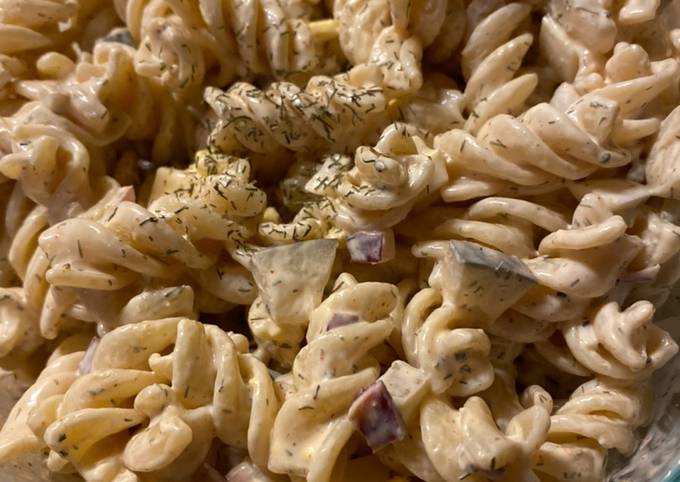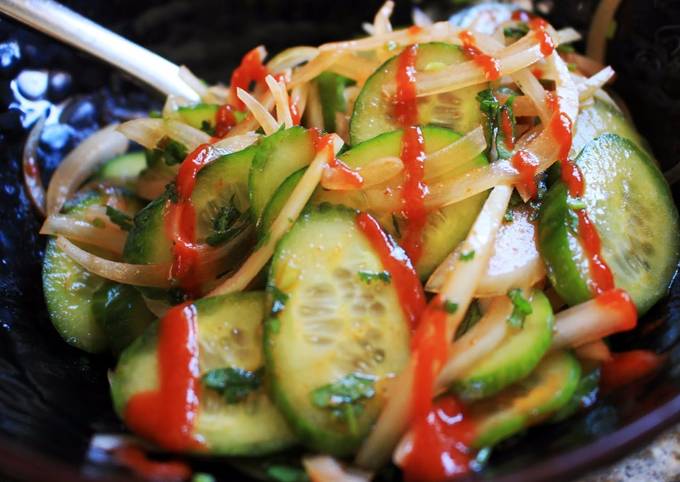
Hello everybody, it’s John, welcome to our recipe page. Today, I’m gonna show you how to make a distinctive dish, kroket panggang (indonesian baked croquet). It is one of my favorites. For mine, I’m gonna make it a bit tasty. This will be really delicious.
Kroket Panggang (Indonesian Baked Croquet) is one of the most popular of current trending foods on earth. It is easy, it is quick, it tastes yummy. It is enjoyed by millions every day. Kroket Panggang (Indonesian Baked Croquet) is something which I’ve loved my whole life. They’re nice and they look fantastic.
Great recipe for Kroket Panggang (Indonesian Baked Croquet). Kroket (croquet) is one of the most popular snacks in Indonesia. It was introduced during the Dutch colonial. It is made of mashed potato filled with minced chicken or ragout then breaded and fried.
To get started with this recipe, we have to prepare a few ingredients. You can have kroket panggang (indonesian baked croquet) using 22 ingredients and 9 steps. Here is how you cook that.
<<<<<<< HEAD ======= >>>>>>> 4d1aa472 (theme adsterra-za)The ingredients needed to make Kroket Panggang (Indonesian Baked Croquet):
- Get 600 gr potatoes, steam, make purée
- Prepare 1 egg
- Get 1⁄2 tsp nutmeg powder
- Take 1 tsp salt
- Prepare 1⁄2 tsp white pepper powder
- Prepare Filling ingredients:
- Get 2 cloves garlic, minced
- Take 100 gr ground chicken
- Take 150 gr frozen mixed
- Make ready 1 tbsp oyster sauce
- Prepare salt and pepper
- Make ready 50 ml milk
- Take 2 tsp cornstarch mixed with 2 tbsp water
- Take Coating mixture:
- Make ready 3 eggs, beat
- Get 100 gr Japanese panko bread crumbs
- Make ready 2 tbsp vegetable oil
- Take Mustard pickles sauce:
- Take 1 cucumber, cut out the seeds part, finely diced
- Get 2 tbsp tomato ketchup
- Prepare 1 tsp French yellow mustard
- Prepare 1 tsp chili sauce
Stir in meat, carrot and celery. Then add water and the rest of the spices. Mix in cornstarch and stir until mixture thickens. Potato Croquette Recipe (Kroket Kentang) There are many different styles of Croquette in every country.
<<<<<<< HEAD ======= >>>>>>> 4d1aa472 (theme adsterra-za)Instructions to make Kroket Panggang (Indonesian Baked Croquet):
- Mix potato purée, nutmeg powder, salt, white pepper powder, and egg until well combined. Set aside.
- Sauté garlic, ground chicken, and frozen mixed vegetables with a little oil. Add oyster sauce, salt, and white pepper powder.
- Add milk. Bring it to boil.
- Add the cornstarch mixture and continue to cook until thickened. Remove from the heat and let it cool.
- Make oval patties by filling in the potato mixture with the filling mixture. Let it rest int the refrigerator for at least 3 hours.
- Combine the panko and the oil in a separate frying pan and toast over medium-heat until golden brown. Transfer the panko into a bowl and allow to cool.
- Dip the patties into the beaten eggs and coat with the panko. Repeat one more time.
- Place the patties on a parchment lined baking sheet. Bake in a preheated 400 F oven for 15 minutes. Remove from the oven.
- Serve warm with the mustard pickles sauce. 😋
Mix in cornstarch and stir until mixture thickens. Potato Croquette Recipe (Kroket Kentang) There are many different styles of Croquette in every country. In Indonesia, Croquette was first introduced during Dutch Colonial rule and it becomes a very popular snack. Mom and her helper used to make croquettes for somebody orders or family to snack on in the afternoon (the tea time). Get full Indonesian Potato Croquettes- (Kroket Kentang) Recipe ingredients, how-to directions, calories and nutrition review.
So that’s going to wrap it up for this special food kroket panggang (indonesian baked croquet) recipe. Thank you very much for reading. I am confident you can make this at home. There’s gonna be more interesting food in home recipes coming up. Remember to save this page on your browser, and share it to your family, friends and colleague. Thank you for reading. Go on get cooking!


